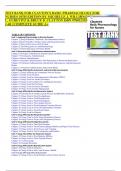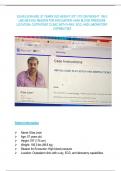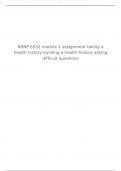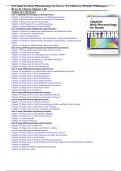Exam (elaborations)
TEST BANK FOR CLAYTON'S BASIC PHARMACOLOGY FOR NURSES 18TH EDITION BY MICHELLE J. WILLIHNGANZ, SAMUEL L. GUREVITZ & BRUCE D. CLAYTON ISBN 9780323550611 CHAPTER 1-48 | COMPLETE GUIDE A+
TEST BANK FOR CLAYTON'S BASIC PHARMACOLOGY FOR NURSES 18TH EDITION BY MICHELLE J. WILLIHNGANZ, SAMUEL L. GUREVITZ & BRUCE D. CLAYTON ISBN 9780323550611 CHAPTER 1-48 | COMPLETE GUIDE A+ TABLE OF CONTENTS. Unit 1: Applying Pharmacology to Nursing Practice Chapter 1: Drug Definitions, Standards...
[Show more]












